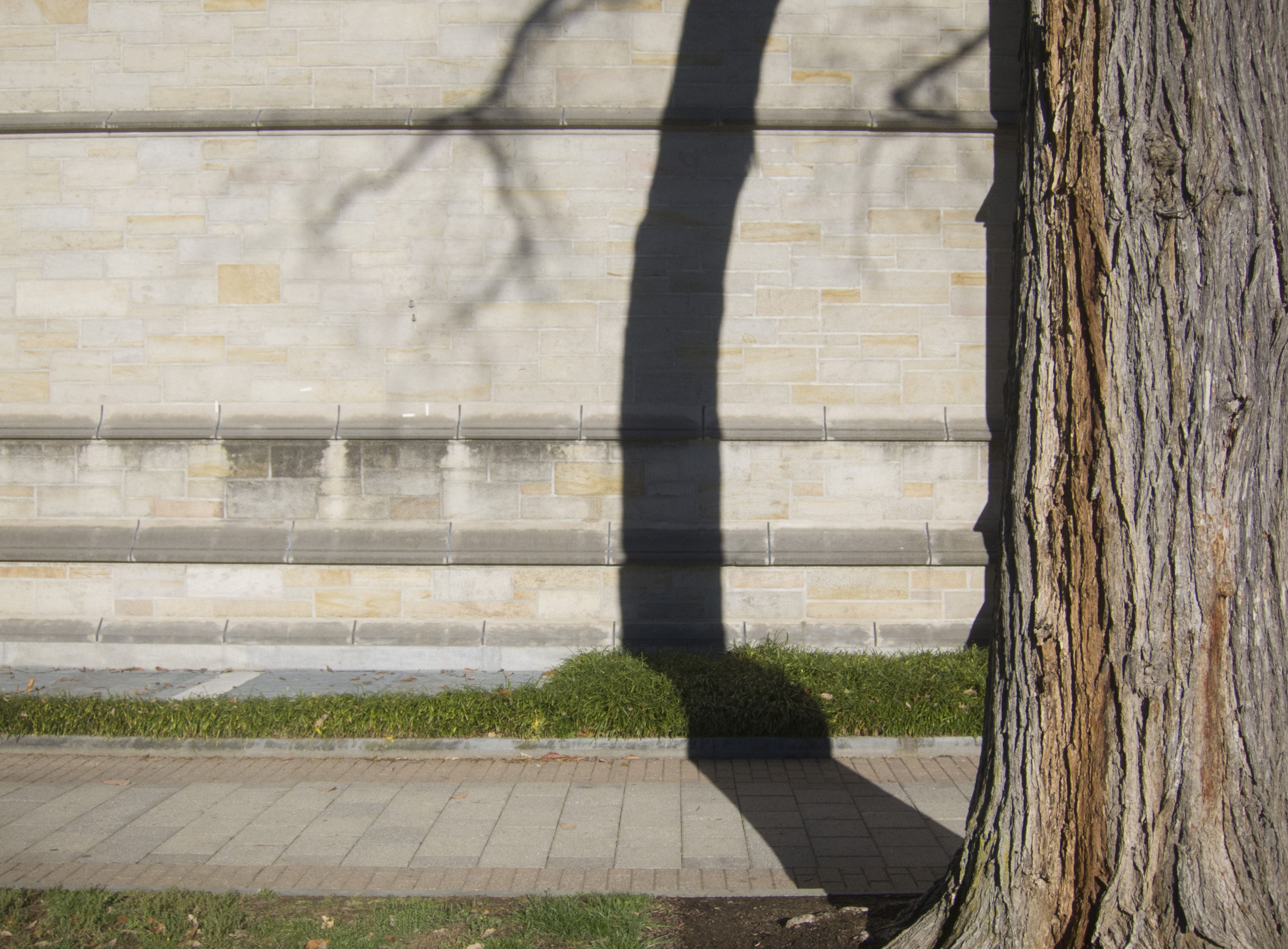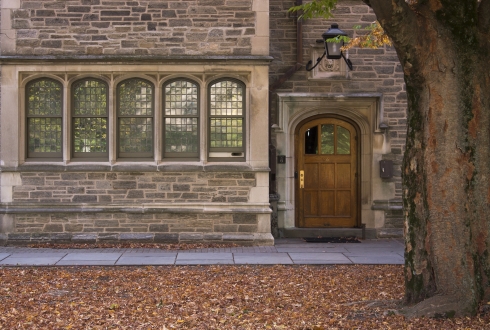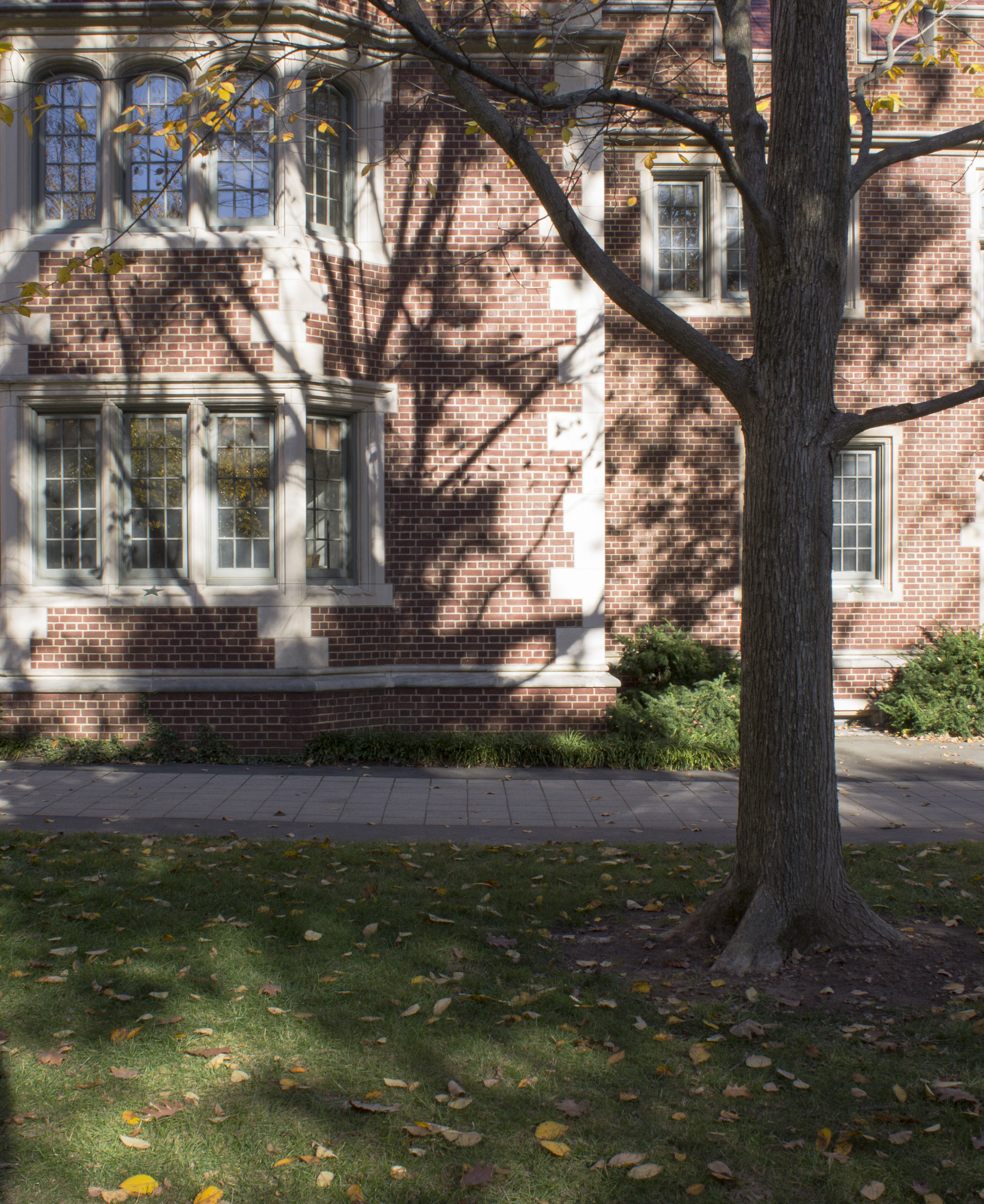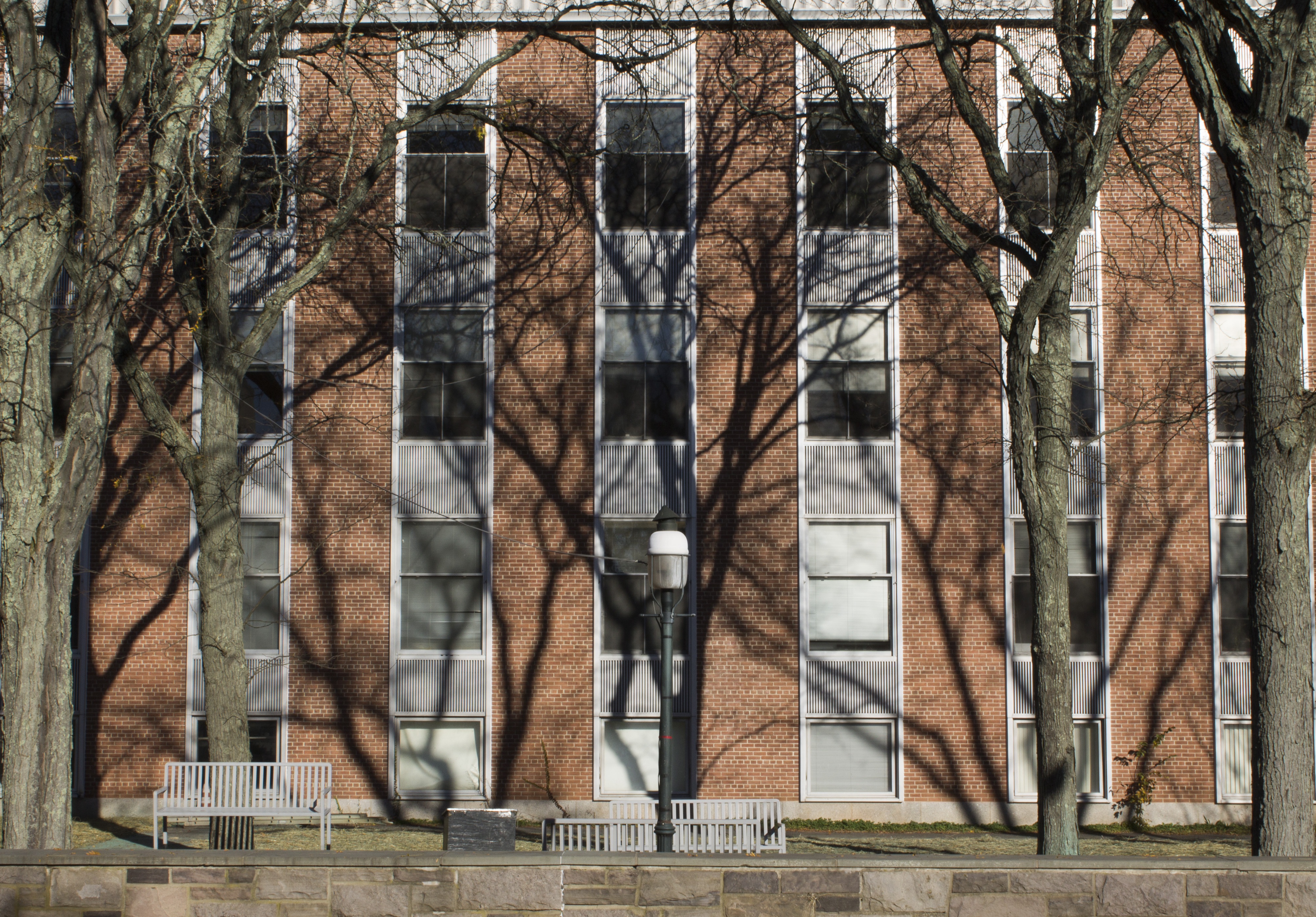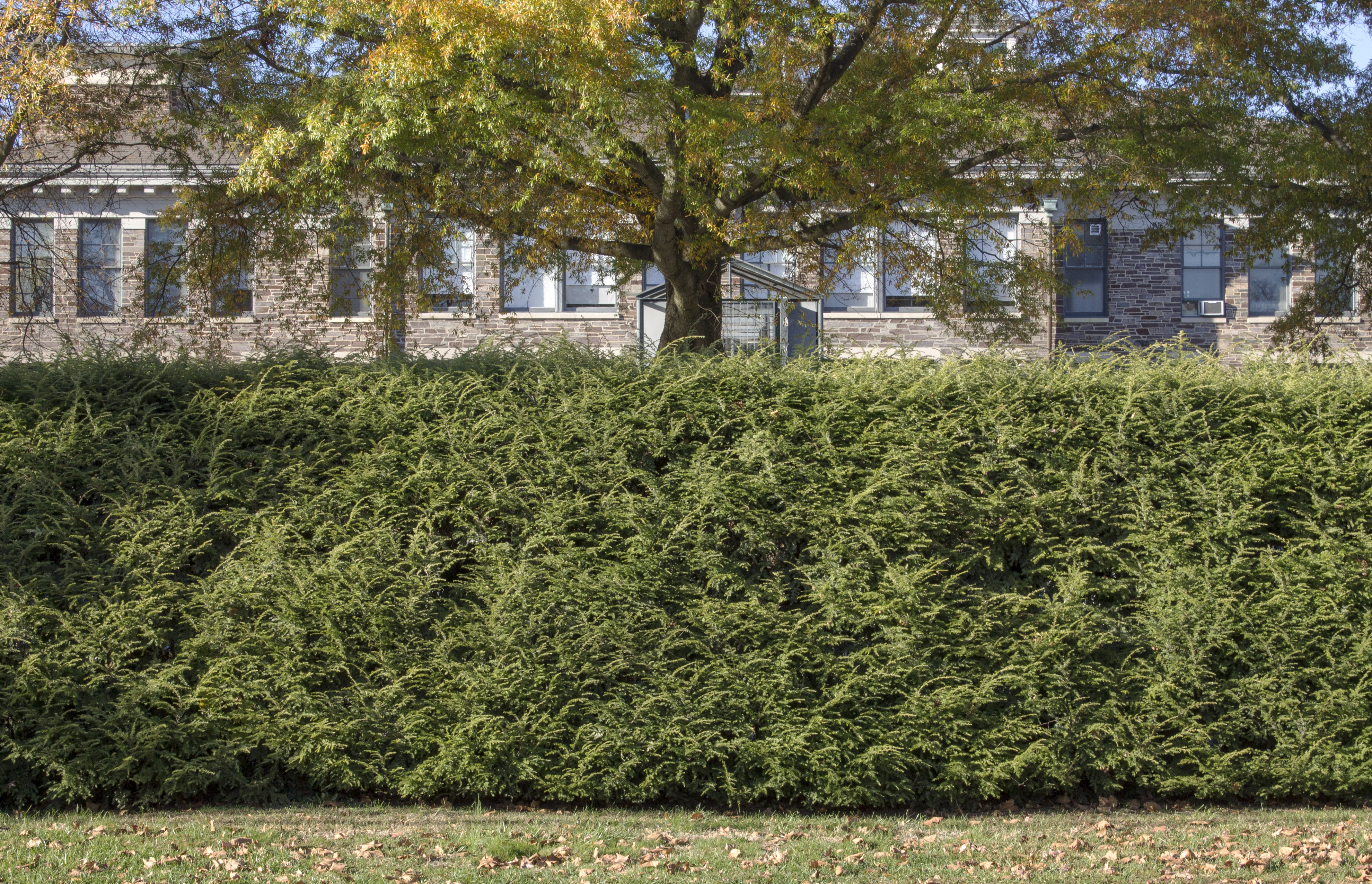If architectures had seasons, the clean crisp lines of modernism would be emphasized by the sobriety and sparseness of the winter. The budding confidence of the Renaissance finds itself in the spring; the boisterous confidence of the summer is Baroque. For the transition between the hot celebration of life and the cool retreat to come, for autumn in other words, its architecture is Gothic. Though the gargoyles of Princeton have overlooked no monks, nor have the crenellations been posts for defensive forces, collegiate Gothic shares something of an older Gothic spirit. There is a certain chaste sensuality to the stone that offers itself to the wandering hand, though no warmth will be reciprocated. In a similar way, autumnal trees stripped of foliage appear austere, but also gain a new sensual body due to its shape, which is hidden in the color and heat of spring.







